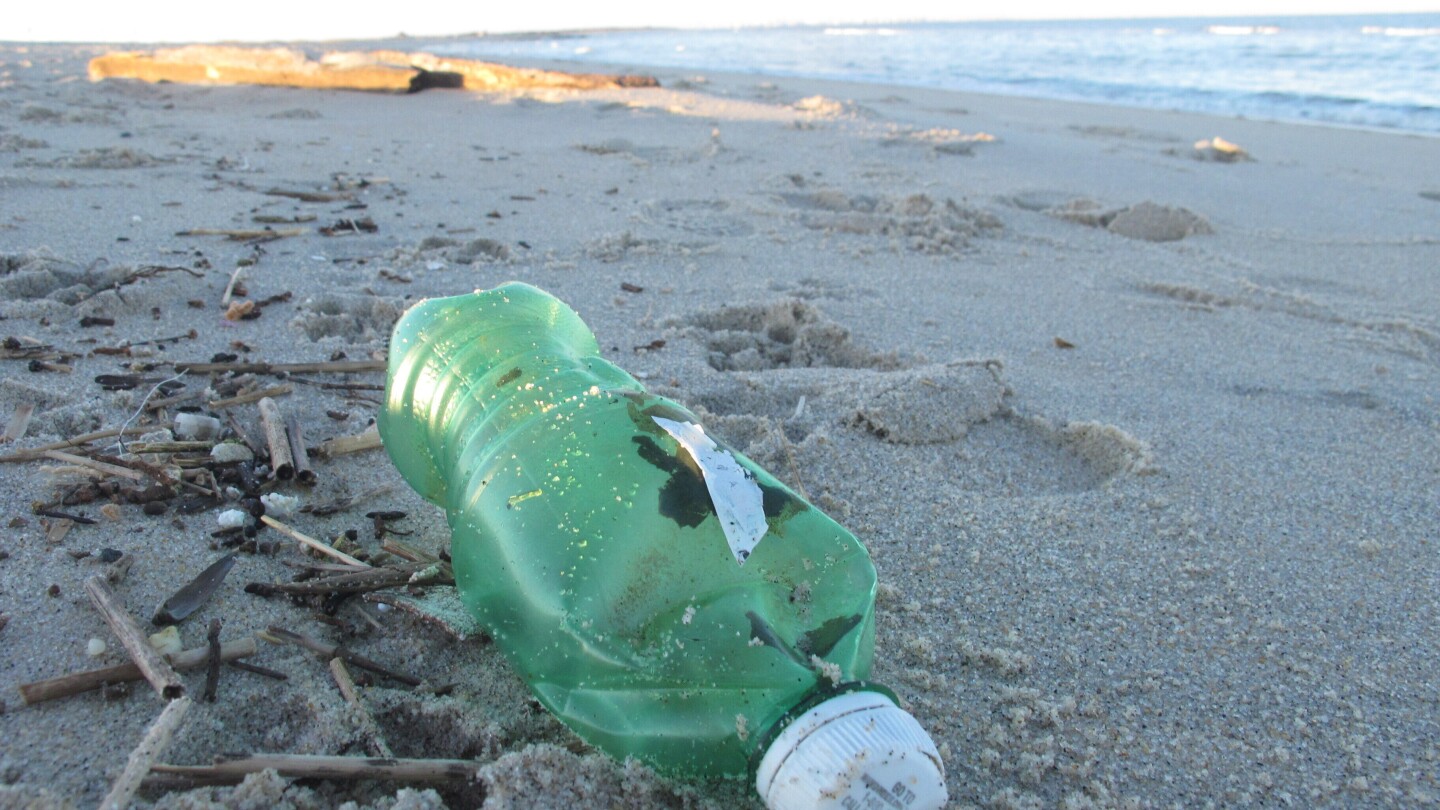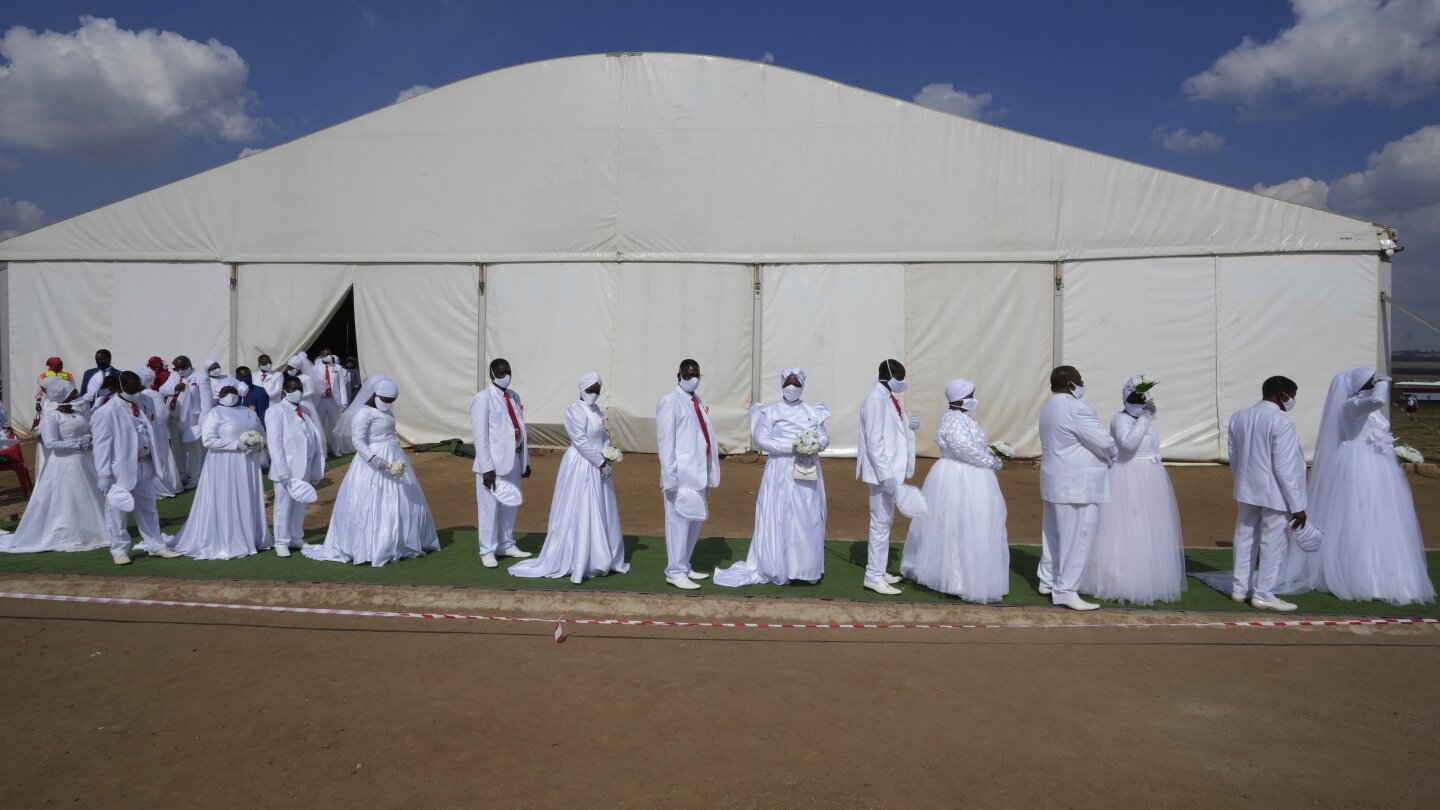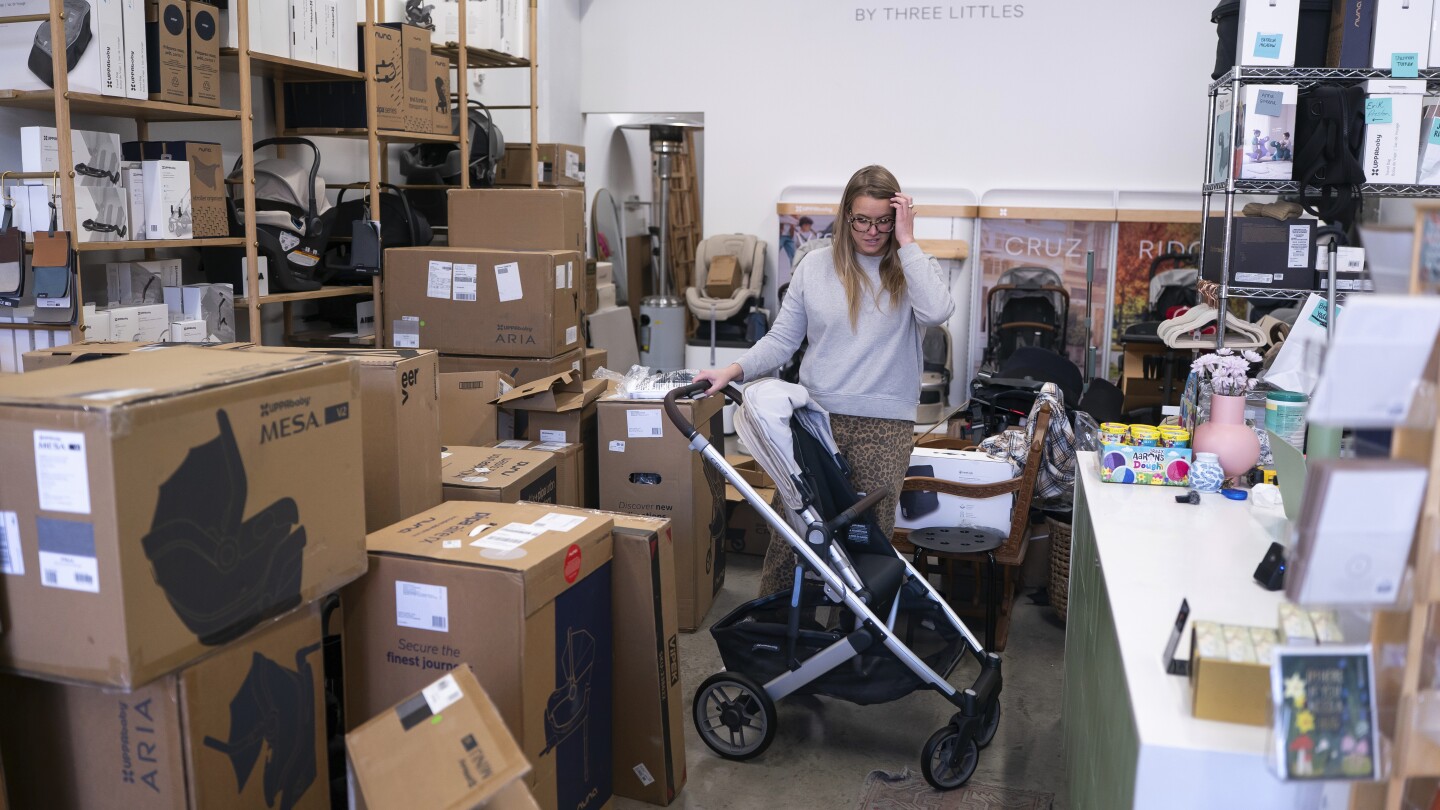Lifestyle
What incentives encourage more sustainable living

NEW YORK (AP) — Lauren Click founded a nonprofit a few years ago offering free composting education to schools around the country. Today, 112 schools participate, yet she can’t get her boyfriend to properly separate his trash at home in Scottsdale, Arizona.
“Adults have more set behaviors than young kids. I try to model a behavior and hopefully he does it,” said Click, executive director of her Let’s Go Compost organization. “But it’s also like, I’m not his parent. I’m not going to berate him every day or ruin my relationship over this. I just fish a bunch of stuff out of the trash.”
Her efforts, which she calls 50-50 effective with her partner, point to an important question in the field of environmental psychology: What’s the best approach when looking to influence colleagues, friends and family to live more sustainably? What’s the worst?
Researchers say Click is on the right track. Modeling can work, though as with other approaches, it depends on who the sender is, how the message is framed and who it’s intended for.
Here’s a look at some of the issues and strategies involved in making people more aware of their role in climate change, which is caused by the burning of fuels like gasoline, coal and gas, and encouraging them to cut waste and protect the natural world.
Peer pressure is at play
Magnus Bergquist is an associate professor of psychology at the University of Gothenburg in Sweden. His research focuses on how to persuade people to adopt more eco-friendly behavior. In a recent study reviewing studies in his area, Bergquist homed in on the influence of others.
“What we found was the most effective strategy for changing behavior is social norms, pointing to what other people are doing or people’s perception of other people’s approval or disapproval,” he said.
“But interestingly, when we ask people about the effectiveness of different interventions, people tend to say that social norms are among the least effective ones,” Bergquist added.
The bottom line: Humans are generally social animals, which isn’t a surprise. But most people underestimate how much they’re influenced by social norms, and campaigns are often based on strategies that are less effective, he said.
Financial incentives also work, to a degree
While Click is unlikely to pay off her boyfriend to do better, Bergquist said financial incentives or disincentives are the second most effective strategy (behind social norms) in getting people to take more sustainable steps in their lives.
That covers everything from bonus cash in a community or office to tax benefits, he said. But there’s a caveat.
When people change their behavior because of financial incentives or disincentives, “some studies show that it crowds out people’s moral compass,” he said. “They will do it for the money. They won’t do it for the sake of the question as such.”
Example: A popular way to promote pro-environmental behavior is holding a contest for something like conserving energy or riding your bike to work.
“Ride your bike and a get a prize,” Bergquist explained. “What we see over and over again is that’s effective in the short term. When the prize or the contest is removed, people tend to go back.”
Education is good, but not enough by itself
Norah Hippolyte is the business manager for St. Mary Magdalen Parish in socially progressive Berkeley, California. She supplies table goods for workers and a wide range of group gatherings, from funerals and community dinners to functions for the parish’s school.
For several years, she’s been trying to wean everyone onto compostable plates, cups, bowls and utensils.
“So I buy the stuff. I make sure people are aware I’ve got it in the closet, that that’s where I keep everything. I say, use this stuff. Make sure you let me know when people start to run low,” she said. “But people choose not to use what’s there. They’re using their own things, and it’s all regular plastic.”
She tries to get them to rinse and recycle, or clean what’s cleanable so it can be used again.
“When I started working in Berkeley, I figured everybody had this whole recycle thing down. Nooooo,” Hippolyte said. “Not only did I have to learn, I have to now try and teach people, OK, this bin is for this, this and this. That bin is for this. Sorting is the biggest issue.”
Hippolyte’s experience doesn’t surprise Bergquist. “I always want to mention education — trying to inform people or educate people about issues — because that tends to be ineffective alone,” he said.
Bergquist says those who have been talking themselves to death or shoveling facts into the faces of reluctant folks should add some other motivation.
For example, when Sarah Davies was trying to convince her 16-year-old son to give up single-use plastics, she switched strategies.
“He truly believed he can use plastic as much as he likes and then put it into the recycling bin,” said Davies, who heads up communications for Earthday.org, organizers of the April 22 Earth Day. “What finally made the difference was me explaining that when he’s drinking from a single-use plastic bottle, be it water or soda, he’s also drinking potentially 240,000 nano particles of plastics. That shocked him.”
Bergquist noted that a couple of experiments have indicated that people pay more attention to negative information than positive information.
“So instead of saying many people are pro-environmental, you can say people are avoiding environmentally harmful products,” he said. “It’s the avoidance.”
It’s a small but potentially valuable tweak, Bergquist said. Take straws.
“Instead of saying people are using paper straws, you might say most people are avoiding plastic straws. You don’t have to explain. People will find an explanation,” he said.
Other expert tips for persuasion include picking your battles; starting small, focusing on one habit; appealing to the person’s interest in other benefits, like saving money or being more efficient; keeping it easy; and not forcing the issue.
___
The Associated Press’ climate and environmental coverage receives financial support from multiple private foundations. AP is solely responsible for all content. Find AP’s standards for working with philanthropies, a list of supporters and funded coverage areas at AP.org.
Lifestyle
A Pentecostal church in South Africa holds mass Easter weddings for 3,000 people, some polygamous

JOHANNESBURG (AP) — A Pentecostal church in South Africa celebrated Easter Sunday with mass wedding ceremonies for around 3,000 people, with many of them entering into polygamous marriages.
The International Pentecost Holiness Church said mass weddings are part of its Easter festivities and the tradition of polygamy, which is observed in some African cultures, has been incorporated into the church.
Sunday’s ceremonies would see some men marry their sixth or seventh wives, church spokesperson Vusi Ndala said. Other grooms were set to marry multiple brides at one time, Ndala said.
“Polygamy is not only embraced but held in high regard” in the church, Ndala said.
A man with his wife and two of his brides walk, during mass Easter weddings for 3,000 people, some polygamous, at the International Pentecost Holiness Church in Heidelberg, east of Johannesburg, South Africa, Sunday, April 20, 2025. (AP Photo/Themba Hadebe)
Couples dance as they enter the church building during mass Easter weddings for 3,000 people, some polygamous, at the International Pentecost Holiness Church, in Heidelberg, east of Johannesburg, South Africa, Sunday, April 20, 2025. (AP Photo/Themba Hadebe)
People queue during mass Easter weddings for 3,000 people, some polygamous, at the International Pentecost Holiness Church in Heidelberg, east of Johannesburg, South Africa, Sunday, April 20, 2025. (AP Photo/Themba Hadebe)
The International Pentecost Holiness Church was founded in South Africa in the early 1960s. It is an African-initiated church, meaning it was founded by Africans rather than foreign missionaries, and blends Pentecostal beliefs with local traditions.
The church has held mass weddings before, including in 2023 when around 400 couples or bridal parties tied the knot. It says this year’s event was its largest by far.
Ndala said the large number of people being married this year was because of “a large number of men marrying more than one wife at a go.”
In some cases, grooms brought their current wife or wives to be with them for their new marriage.
The weddings were held at the church’s headquarters, a huge, dome-shaped building in the town of Heidelberg, near Johannesburg, that can seat 60,000 people.
The congregants who were being married waited in long white tents set up in open fields next to the church building, where they were given bridal flowers, food packs and water. They then filed into the church building in long queues, the women wearing white bridal gowns and many of the men in matching white suits and red ties.
Polygamy is legal in South Africa if the union is registered as a customary marriage.
A man with his wife and two of his brides sits inside a marquee ahead of the mass Easter weddings for 3,000 people, some polygamous, at the International Pentecost Holiness Church in Heidelberg, east of Johannesburg, South Africa, Sunday, April 20, 2025. (AP Photo/Themba Hadebe)
A groom in a wheelchair is assisted by a fellow member whilst his two brides walk in front, during mass Easter weddings for 3,000 people, some polygamous, at The International Pentecost Holiness Church in Heidelberg, east of Johannesburg, South Africa, Sunday, April 20, 2025. (AP Photo/Themba Hadebe)
___
AP Africa news: https://apnews.com/hub/africa
Lifestyle
Queen Elizabeth II’s favorite dog breed race for glory in the UK’s Corgi Derby

LONDON (AP) — Some of the fastest canines on four very short legs have raced for glory in Scotland’s annual Corgi Derby.
The Musselburgh Racecourse Corgi Derby was first held in 2022 to mark Queen Elizabeth II’s 70 years on the throne. The late monarch was a devoted corgi fan who owned almost 30 of the breed over the decades, along with a few dorgis – a corgi-dachshund cross.
Four-year-old Juno beat a 16-strong field of dashing dogs dressed in bright sweaters over the 230-foot (70-meter) race on Saturday at the racecourse outside Edinburgh. She came from behind in the final stretch to beat last year’s winner, Rodney.
The winner and her owners, Alisdair Tew and Fran Brandon, were presented with a trophy and dog treats by tennis coach Judy Murray, mother of Scottish star Andy Murray.
Tew told the BBC that “we trained her for this last year but this year we just resorted to just letting her chasing things, particularly seagulls” on Edinburgh’s Portobello Beach.
“Juno is always ready for treats -– that is probably why she won,” he said.
Elizabeth’s love of corgis began in 1933 when her father, King George VI, brought home a Pembroke Welsh corgi they named Dookie
Corgis were often by Elizabeth’s side in the decades before her death in September 2022 — accompanying her on official tours, reportedly sleeping in their own room at Buckingham Palace and occasionally nipping the ankles of visitors or royal family members.
Three corgis even appeared alongside the queen as she climbed into James Bond’s waiting helicopter in the spoof video that opened the 2012 London Olympics.
Lifestyle
Tariffs are likely to make having a baby cost more

Sam Rutledge and his wife have a baby due in mid-July, so they thought they had a few more months to research and buy the gear they’ll need.
But President Donald Trump’s tariff announcement in early April turned the couple’s slow walk into a sprint. In the past few weeks, they’ve bought two strollers, a car seat, a nursery glider, a crib and a high chair. All of them are made overseas.
“These are all pretty expensive under normal conditions, but when it became clear tariffs were coming we decided to buy them in case they became prohibitively expensive,” said Rutledge, who is a high school physics teacher.
Raising a child in America has never been cheap. In the first year alone, it costs an average of $20,384, according to Baby Center, a parenting website. But tariffs – ranging from 10% for imports from most countries to 145% for imports from China — will make it many times more expensive for new parents.
An estimated 90% of the core baby care products and the parts that go into making baby paraphernalia – from bottles and diaper pails to strollers and car seats – are made in Asia, according to the Juvenile Products Manufacturers Association, a U.S. trade group. The vast majority come from China.
“Overseas manufacturing has been the norm in our industry for decades,” said Lisa Trofe, the association’s executive director.
It wasn’t always this way. When Munchkin Inc. CEO Steven Dunn founded his company in 1991, it made baby bottles in California with tooling from New Jersey. But over the years, the manufacturers he used shut down and the cost of doing business in the U.S. skyrocketed. Now, about 60% of Munchkin’s 500 products, from a $5 sippy cup to a $254 Night Owl Stroller with headlights, are made in China.
In response to the tariffs, Dunn halted orders from China and instituted a hiring freeze at Munchkin’s California headquarters, where 320 people are employed. Dunn expects Munchkin will run out of some products within three months.
“There is no possibility of being able to pass on those tariffs” to customers in the form of price increases, he said.
Dunn said he tried to reduce his dependence on China in recent years, shifting some manufacturing to Vietnam and Mexico. He also spent a year communicating with American manufacturers to see if one could make Munchkin’s new Flow Nipple Shield, which allows a breastfeeding mother to see if her milk is flowing. But most said they couldn’t make the complex silicone product, Dunn said. It’s now made in Vietnam.
“There’s not enough tool makers and manufacturing expertise and automation and skilled labor in the U.S. to make the thousands of products the juvenile industry needs,” Dunn said.
Multiple baby brands and companies contacted by The Associated Press didn’t respond or said they weren’t commenting on the tariffs, including Graco, Chicco, Britax, Nuna, Dorel Juvenile, UppaBaby, Evenflo and Bugaboo.
The Juvenile Products Manufacturers Association said it asked the Trump administration for a tariff exemption, arguing that baby products are essential for children’s well-being. Trump exempted some baby products, including car seats and high chairs, from import taxes during his first administration. But he hasn’t said whether he would consider doing so again.
The Associated Press left a message seeking comment with the White House.
Nurture&, a company that makes a popular nursery glider and other baby furniture, said it’s trying to be transparent about the impact of tariffs.
In a recent email, the company told customers it started lowering prices on some items when the tariffs hit. The company, which was founded in 2020, said it would keep those lower prices in place until April 30, but after that it may not be able to absorb the full cost of the import duties.
“These are large purchases, these are investments, and this is a very sensitive life stage,” Nurture& Chief Merchant Jill Gruys said. “We want people to make the best decision for their budget and their family.”
Elizabeth Mahon, the owner of Three Littles, a baby store in Washington, said she’s worried the tariffs will make essential products too expensive for some families.
Mahon volunteers twice per month at the Department of Motor Vehicles, where she teaches people how to buckle their kids safely into car seats. Some families still must be persuaded to use car seats, she said. Mahon fears higher prices would be another deterrent.
“No one is dying if they can’t buy a toy, but if they don’t have access to car seats, kids will get seriously injured,” she said.
At her own store, Mahon is getting notices that some manufacturers plan to introduce steep price increases in May. She feels lucky she could rent a storage facility and build up inventory ahead of the tariffs. For many small businesses, she said, the extra costs are “a death sentence.”
At The Little Seedling baby shop in Ann Arbor, Michigan, owner Molly Ging said she would normally be putting in Christmas orders at this time of year. Instead, she’s sorting through price increase notices from many of the vendors she works with.
“It’s a lot to manage, and I just have no idea how it’s going to play out,” she said.
Business is brisk right now, with customers hoping to beat tariff-related price increases. But Ging worries about her 13 employees – all moms who bring their kids to work – and about whether she can maintain enough inventory to meet future demand.
“Babies don’t stop being born because there’s tariffs,” she said.
-

 Middle East1 day ago
Middle East1 day agoIran says progress in nuclear talks with US, confirms third round next week | News
-

 Middle East2 days ago
Middle East2 days agoTunisian court hands opposition figures lengthy jail terms | Human Rights News
-
Lifestyle2 days ago
The 250th anniversary of the Battles of Lexington and Concord opens debate over US independence
-

 Europe1 day ago
Europe1 day agoRussia Ukraine truce: The real strategy behind Russia’s sudden truce announcement
-

 Europe1 day ago
Europe1 day agoLive updates: Trump news on Iran and Ukraine talks, immigration crackdown, tariffs
-
Asia1 day ago
Hong Kong’s oldest Democratic Party is shutting down as Beijing leaves no room for dissent
-
Middle East1 day ago
Israeli bombardment of Gaza kills 92 in two days: Health Ministry | Israel-Palestine conflict News
-

 Europe1 day ago
Europe1 day agoRussia sentences 19-year-old woman to nearly three years in a penal colony after poetic anti-war protest




